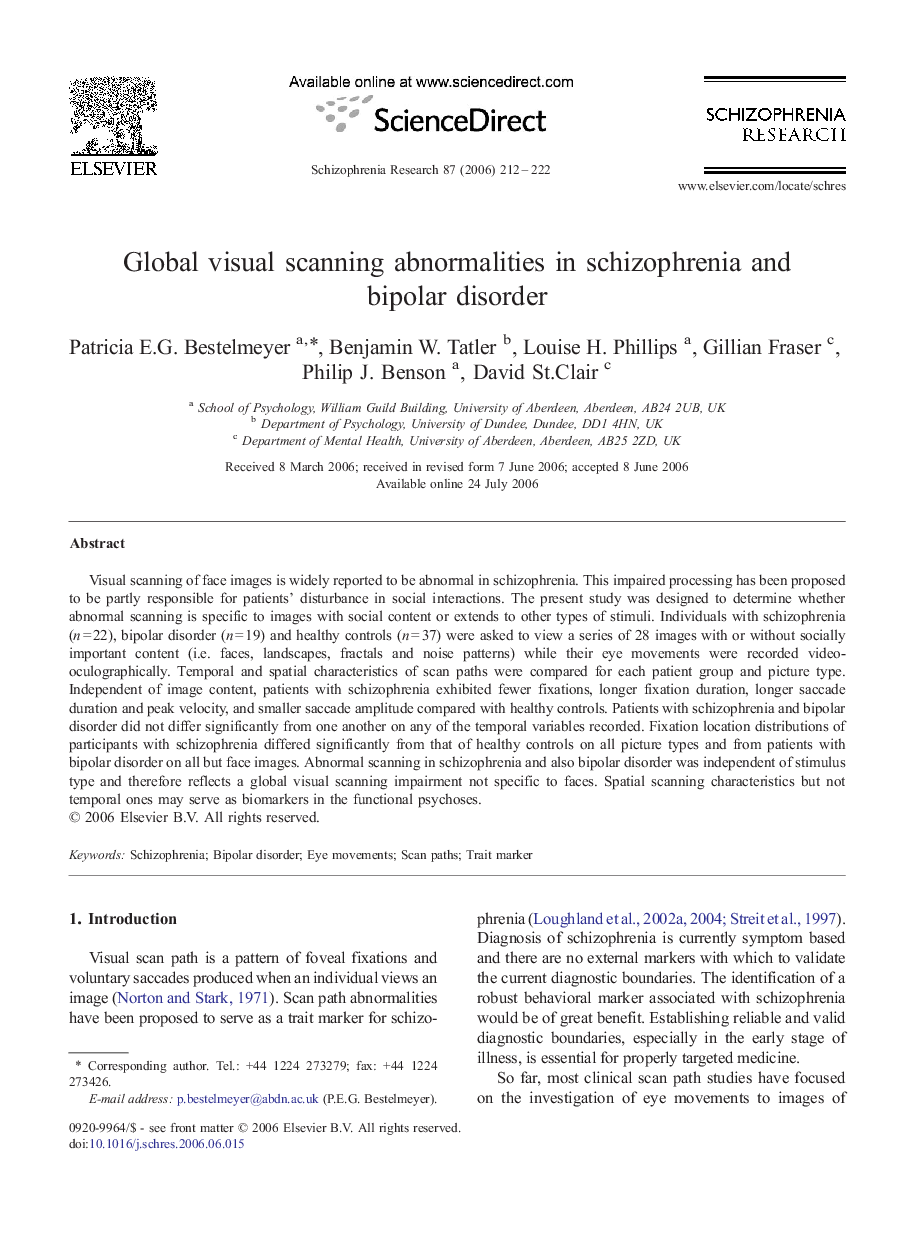| Article ID | Journal | Published Year | Pages | File Type |
|---|---|---|---|---|
| 340189 | Schizophrenia Research | 2006 | 11 Pages |
Visual scanning of face images is widely reported to be abnormal in schizophrenia. This impaired processing has been proposed to be partly responsible for patients' disturbance in social interactions. The present study was designed to determine whether abnormal scanning is specific to images with social content or extends to other types of stimuli. Individuals with schizophrenia (n = 22), bipolar disorder (n = 19) and healthy controls (n = 37) were asked to view a series of 28 images with or without socially important content (i.e. faces, landscapes, fractals and noise patterns) while their eye movements were recorded video-oculographically. Temporal and spatial characteristics of scan paths were compared for each patient group and picture type. Independent of image content, patients with schizophrenia exhibited fewer fixations, longer fixation duration, longer saccade duration and peak velocity, and smaller saccade amplitude compared with healthy controls. Patients with schizophrenia and bipolar disorder did not differ significantly from one another on any of the temporal variables recorded. Fixation location distributions of participants with schizophrenia differed significantly from that of healthy controls on all picture types and from patients with bipolar disorder on all but face images. Abnormal scanning in schizophrenia and also bipolar disorder was independent of stimulus type and therefore reflects a global visual scanning impairment not specific to faces. Spatial scanning characteristics but not temporal ones may serve as biomarkers in the functional psychoses.
